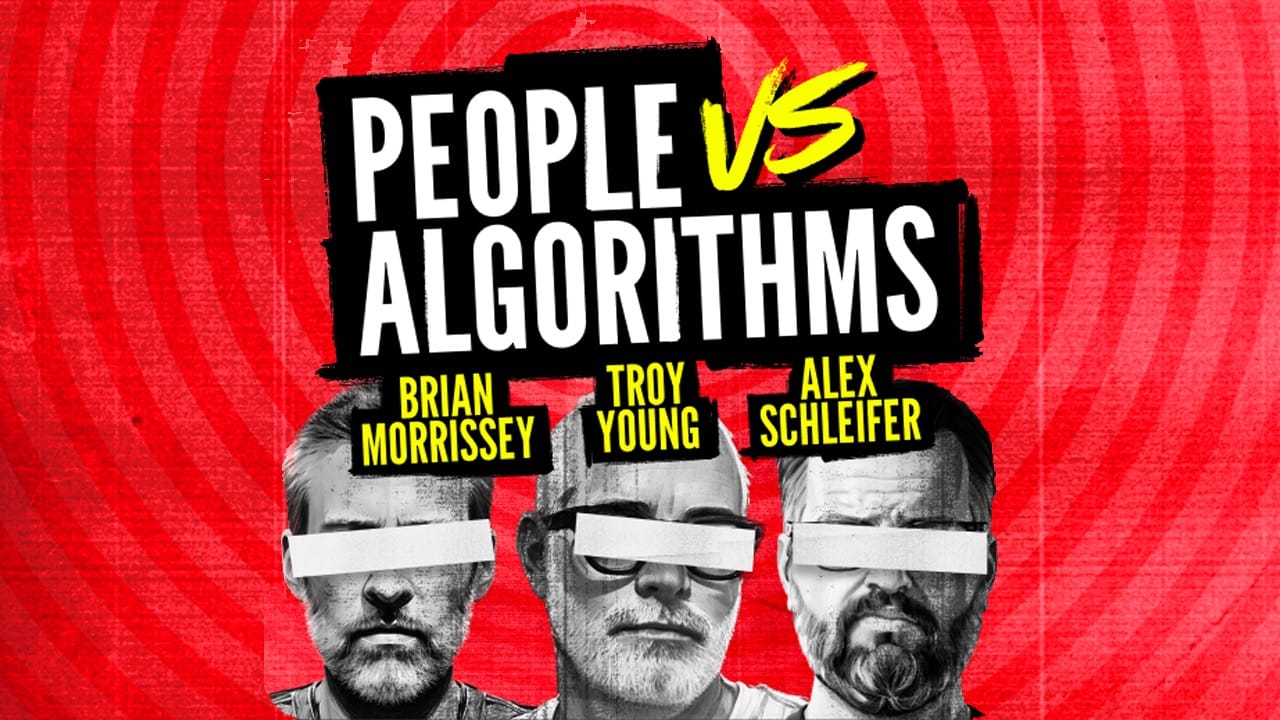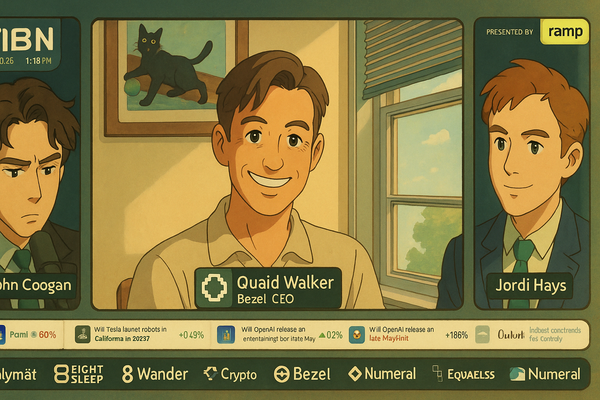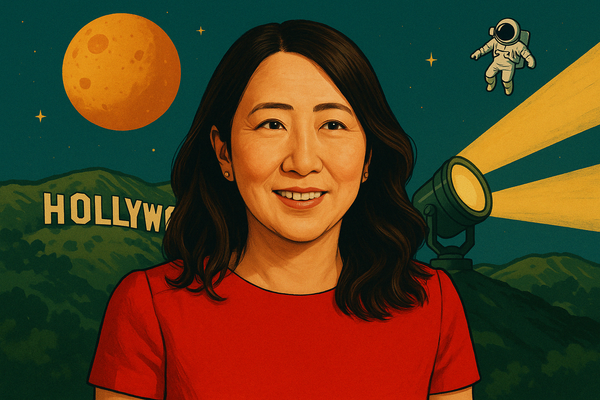Above-the-line media
Shifting media incentives

In today’s edition:
- Above the line media is best positioned to navigate the shifts happening to the Information Space
- News publishers see subscriptions as their most promising growth paths, according to our new State of Sustainable News Publishers report.
- The latest episode of PvA explored the necessity of productive tension, what Google’s NotebookLM says about the future of the media industry, the uneven track record of creators releasing products, and a debate over whether Trump is a media genius.
Reminder: Upgrade your subscription to a TRB Pro membership. It’s $200 per year for access to all of The Rebooting’s content, invites to events like an upcoming live podcast we’re doing in NYC in December, preferred access to The Rebooting Dinner Series, and a new texting community.

Unlocking vertical video for the open internet
With video emerging as the dominant form of media consumption, Outbrain created Moments to help publishers tap into the rising trend of vertical viewing. By bringing social-style video engagement to the trusted Open Internet, Moments enhances the user experience and allows publishers to offer immersive ad formats that drive meaningful outcomes. Backed by our prediction technology, Moments empowers publishers to captivate audiences, extend viewing time, and generate new revenue streams—all while providing a premium environment where brands can thrive.
Discover Moments for Your Audience
Above the line
Yesterday, I visited a major media company’s headquarters to talk to a group of executives. One question came up that often does: What are the models that are best positioned for this rapidly changing landscape?
I recorded a new episode of People vs Algorithms yesterday with Troy Young, and he had a good concept of above the line media and below the line media. In old days, this kind of divide was used to differentiate the sexier brand advertising from the more scruffy direct marketing. In this schema, the question is which models will prove resilient in a world of limitless synthetic content.
The models that are best positioned are varied. The one unifying thread is distinctiveness. Many of the centrifugal forces of digital media have created incentives to create versions of the same thing. This is what happens when you lose control of distribution.
The two main sources of audience, search and social, created incentives that publishers sensibly responded to by pumping out versions of the same thing. The famous search example has long been the embarrassing battle to win “What time does the Super Bowl start” searches. Similarly, Facebook created incentives that led to what I came to see as “viral sameness.” It was very much the same ingredients reconstituted under a different brand.
For better or worse, the publishers who excelled at responding to those incentives are now on the wrong side of the line. There are some who will pooh-poohing the shift, which is always a safe position to take because it has an air of being in the know, although I remember the exact same blasé attitude among many leaders about the internet.
Best bet is to assume this is a long-lasting shift, even on the order of the transition to internet business models, similar to Pascal’s Wager. Information retrieval is going through a profound shift, and media is always downstream of tech aggregators. The incentives that are emerging from the newest flavor of aggregation are still emerging but coming into view.
Be distinct. This will favor individuals and new brands. My crudely drawn hierarchy of differentiation from 2020 mostly holds up. The reason individuals have been on such a winning streak against institutions is leaning on human differentiation is something of a cheat code. It’s far harder to create differentiation within an institutional model based on the old tools of legacy, brand and packaging. Point of view is highly valuable. Newsletters and podcasts are the most vibrant areas of media because they are formats the incentivize point of view.
Go direct. The strongest models will have a direct tie to a specific audience – and know a ton about that audience, even to the point of it being a community. At dinner this week, I was struck by how differently the B2B publishers saw their businesses than B2C publishers. B2B is also as close as there is to a cheat code in media. These models are easier to make work than being a lifestyle publisher. And some of that is the structure of these businesses always prioritized direct ties to smaller, more durable audiences. There was no pivot to video in B2B not because the people running these organizations were oracles, but because it never made sense in any possible way. Promising new models like Puck, Semafor and Punchbowl are borrowing heavily from the standard B2B playbook.
Original reporting, backed with analysis. Bay Area sports writer Tim Kawakmi did a very interesting podcast recently to discuss his move from The Athletic to the SF Standard. He noted that reported analysis is a vibrant market (and took many swipes at NYT bureaucrats for degrading the distinctiveness at The Athletic.) Packaged news media will thrive by focusing on what makes it unique in the Information Space: Reporters still do the work. The best things news publishers can do is reorganize themselves, using AI as much as possible, to devote as much of their resources as possible to reporting. That means cutting down on the in-between roles and tasks that end up draining resources from the actual reporting work.
Personality & talent. I’ve long rated personality as one of the lowest form of differentiation, akin to the position of puns in the humor hierarchy. Yet it is powerful at a time when many forms of leverage are disappearing. Taylor Lorenz’s departure from The Washington Post to Substack was inevitable. (My money is on Olivia Nuzzi taking this route.) She is what Troy would call a “free radical,” an individual who resists the conformity that institutions typically require. The creator economy is basically the home of free radicals. Packaged news media will need to accommodate free radicals and compensate them as talent, which is going to stress how they’ve been organized.
Unique data sets. Polymarket is now the No. 7 “newspapers and magazines” app in the App Store. You can argue that the prediction market isn’t really a news publisher, but it has the potential to build a powerful news and information business with a far better business model. Why sell ads when you can take a cut of the bets? This is a great time to have unique data.
Below-the-line publishers will not be able to adapt themselves to these new incentives. There are always those clinging to the past. Some tells:
Aggregators. AI is bad at many things (for now), but it’s already very good at versioning. Aggregation is a basic form of versioning. You could build a bot to do what a generation of digital publishers did to aggregate and reformat existing content. The economic value of this activity was always dubious. It was a growth hack to get the upside of original content without the trouble and expense of creating it.
Middling evergreen content. Banking on library content is tough to pull off. Library content is a viable model, for a while at least, but the SEO arb game will get harder. This is the story of all arb plays. Too many publishers have laundered their brands to become front operations for SEO chop shops. Outside of SEO X, nobody is taking to the streets to protest Google’s manual actions to rein in site-reputation abuse.
Basic news content. The flip side of AI accruing value to in-depth reporting, it’s going to eviscerate basic information reporting. The value of news content has always declined soon after publication, unlike a lot of evergreen content. This will become a precipitous drop in value as AI aggregators improve.
Generic, disposable brands. Many digital media brands are minimally plausible brands. They are plausible enough to exist in search results or content recommendation widgets. The fight of made-for-advertising sites has had an awkward aspect: It can be hard to differentiate MFAs from what many “real” media companies produce. If your brand is not specifically sought out through homepage traffic, email or app, you will struggle.
Programmatic dependents. My working theory of programmatic advertising is that it is in the midst of a shift of power. The combination of privacy restrictions on wanton data collection that arose from the utter failure and farce of self-regulation along with the questionable upside of these convoluted systems is forcing change. The rise of “curation” is somewhat amusing since it strikes me as a return to the past. The open programmatic market is on a path to decline to zero.
To survive and thrive in this kind of environment, the best media companies will:
1. Focus on what humans do uniquely well
2. Prioritize efficiency to compete with independent talent
3. Recognize that the gap between evergreen and new content is closing due to AI capabilities
4. Be ruthless in prioritizing resources and efforts
5. Be talent and audience first
It’s not a pivot, but…
The Rebooing’s State of Sustainable News Business report, supported by Outbrain, found that subscriptions are by far the most promising business area for news publishers, trouncing other growth paths.
Creator products often suck

There’s an argument that the best media business models do not rely on advertising or subscriptions, but instead act as a front for a business with better economics. If only we all had a terminal business like Bloomberg. The modern version of this is creator and niche media businesses that attempt to launder their distribution position and audience trust in order to build a “negative CAC” for a product business. This can go awry since being good at building an audience has very little to do with being good at building a product. On our latest episode of People vs Algorithms, we discuss the case of star YouTube tech reviewer Marques Brownlee and his phone wallpaper app, which was roundly panned for its poor quality.
Listen and subscribe to PvA on Apple | Spotify | other podcast platforms
Thanks for reading. Give feedback by hitting reply.
To discuss partnerships, send me a note at bmorrissey@therebooting.com. We have a variety of collaboration opportunities to connect partners with prospective customers at leading and emerging media companies.




